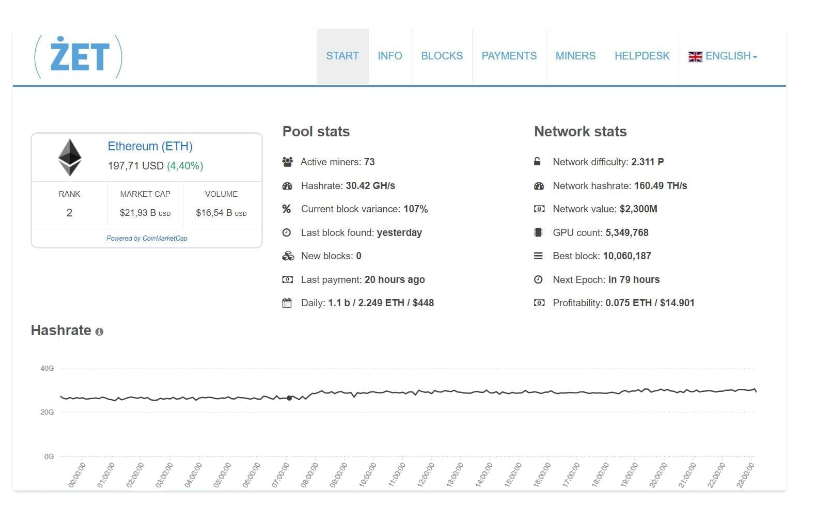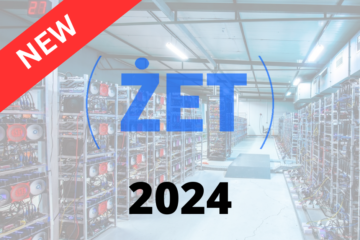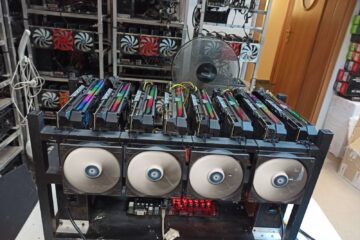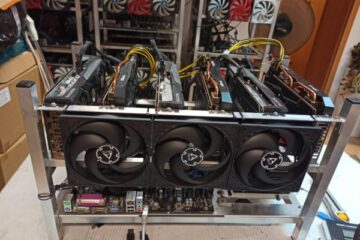Cryptocurrency mining is a complicated and complex process, but thanks to specialized devices called mining rigs, all this becomes easier. The mining rigs are equipped with dedicated software that allows you to generate computing power, which is then directed to the network of a specific cryptocurrency. The whole thing is so automated that the owner of the cryptocurrency mining rigs only has to choose the cryptocurrency he wants to mine and the mining pool with which he intends to establish a connection. The rest happens automatically. In the article below, I will try to present the most common methods of mining cryptocurrencies: solo mining and mining pool.
Are you sure I should use the services of a mining pool?
At the very beginning, it is worth noting that we are not really obliged to use the services of a mining pool, we can mine without its intermediation. Sounds tempting, doesn’t it? But why more than 95% of miners choose to join the mining platforms? The answer is very simple: it just pays off.
An alternative to mining within a mining pool is mining while being connected directly to chosen coin network, commonly known as solo mining. In both modes, we will mine cryptocurrencies within the same network together with all other miners in the world who also decided to mine the same cryptocurrency at the same time. If we realize that in the case of the largest cryptocurrencies, the number of specialized devices connected to the network is counted in millions (Bitcoin, Ethereum), and the frequency of finding new blocks is rigidly recorded in the cryptocurrency protocol (for example, in the Bitcoin network, an average of 150 new blocks is created daily ), then after superficial calculations and simulations we get a disturbing picture. Having one cryptocurrency miner specializing in finding Bitcoin, it will take us at least several years to find the correct solution! Of course, all this time our mining rig will need electricity and internet supply – to be able to effectively connect to the cryptocurrency network. However, energy operators are not so patient and usually utility bills have to be paid much earlier than a several-year horizon, and the miners themselves prefer to receive remuneration more often.
In other words, in order to receive more regular payouts, you need to collect more computing power and this basic functionality is provided by cryptocurrency mining pools. Such a pool is a collective entity that connects a large number of miners into one network node. The work of each miner is individually summed up and directed to the search for a new block. In this way, mining platforms hit blocks on a regular basis, depending on their size scale, every few minutes or, for example, every few hours. The only Polish Ethereum mining pool according to the data as of May 13, 2020. hits an average of 2.3 blocks of Ethereum per day.
Solo mining strengths and weaknesses
But what if, after all, we want to try our hand at solo mining, and the long waiting period for the award does not deter us? This solution also has its advantages, the question is whether they will be encouraging enough to give up the services of the mining platform.
First of all, in the solo mining mode, we maintain independence: it is the miner who configures the connection to the cryptocurrency network himself, controls and monitors the progress of his work. If we make a mistake – we can only hold ourselves responsible for the failure.
On the other hand, when we hit a block, all salaries go to our account. At this point, we will especially feel the lack of commission that usually mining platforms charge for their services, most often 1-2%.
A very interesting mechanism built into the mining of cryptocurrencies is the phenomenon of luck.
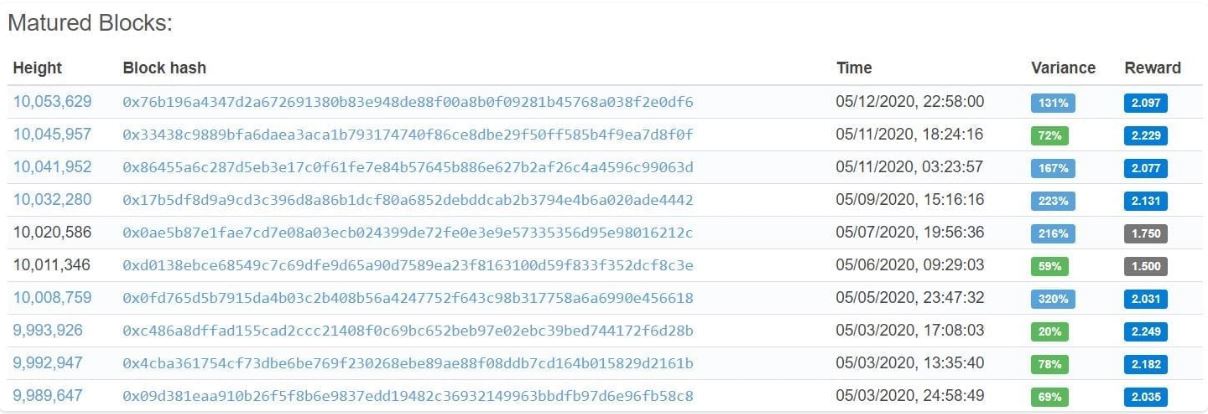
Luck is a classic measure of variation. Intuitively identified with the diversity of the community; is the arithmetic mean of the squared deviations of individual feature values from the expected value. This scientific description tells us that if, according to the calculations, it will take our excavators 30 days to find a block, it may also take 90 or even 180 days in the event of bad luck. In case of good luck, we can hit the block after 1 hour or just as well after 15 days. Remember, however, that on a larger sample (several dozen blocks), the average time will be aimed at the initial 30 days. However, it does not say anywhere that we cannot hit a series of 5 very long blocks and vice versa. This is just how the process of mining cryptocurrencies from the inside works
Importantly, in the case of solo mining, an unfavorable variance can put the entire venture down, extending the wait for the first salary by several times. On the other hand, there are known cases of hitting a block very quickly, but it should be approached more like a lottery game, and to increase the chance of winning, it’s best to just play more tickets. Translating this into mining – your chances of success will be greater by joining a mining pool.
Strengths and Weaknesses of the mining pool
If you choose to mine via the mining platform, the technical aspect is gone, the mining pool configures the connection to the network and ensures the best possible connection quality. It is customary for mining pool operators to list recommended methods for connecting to their platform and the types of software supported. On the part of the miner, it is enough to read and follow the operators’ recommendations.
Some of the pools require setup a miner’s account by registering on their portal, for this we will have to provide an e-mail address and password. Some of them communicate with their miners based on the wallet address defined by the miner, this type is more secure, we simply leave less personal data.
Undoubtedly, the strength of mining pools, apart from the simplicity of configuration, is the graphical interface. Thanks to it, we can track the progress of the work of our machine park. Most platforms offer a lot of facilities in this aspect, ranging from graphical charts, through individual statistics of each excavator, salary and payment history. This greatly facilitates control and management.
Another strong point is the aforementioned ability to deal with variance – by mining together, we will receive remuneration much faster, and we will go through an unfavorable series of long blocks much more efficiently than alone. It must be remembered at this point that, unlike solo mining, the salary will be split among the miners working in the pool. We will only receive a part of the reward depending on how the pool operators calculate the rewarded (more on this in the next article).
The mining pool customarily charges a commission for its services, which will reduce our remuneration, the most common levels of commission are in the range of 0.5-3%.
Summary
To sum up, the choice of the method of mining cryptocurrencies is a fundamental matter that must be determined at the very beginning. The solo mining mode is aimed at more advanced miners, it requires more technical knowledge. Additionally, miners with a larger fleet of machines are preferred, which will provide a better chance of finding the block faster. If you do not meet the above criteria – do not worry, you will join the vast majority of miners (95%) who use the services of mining platforms.
Author: Marcin Żywica from ŻET Technologies
 Miner, founder of ŻET Technologies, a company designing and manufacturing advanced crytpo miners. ŻET Technologies provides computing power for blockchain networks, creates technology for 21st century business.
Miner, founder of ŻET Technologies, a company designing and manufacturing advanced crytpo miners. ŻET Technologies provides computing power for blockchain networks, creates technology for 21st century business.
